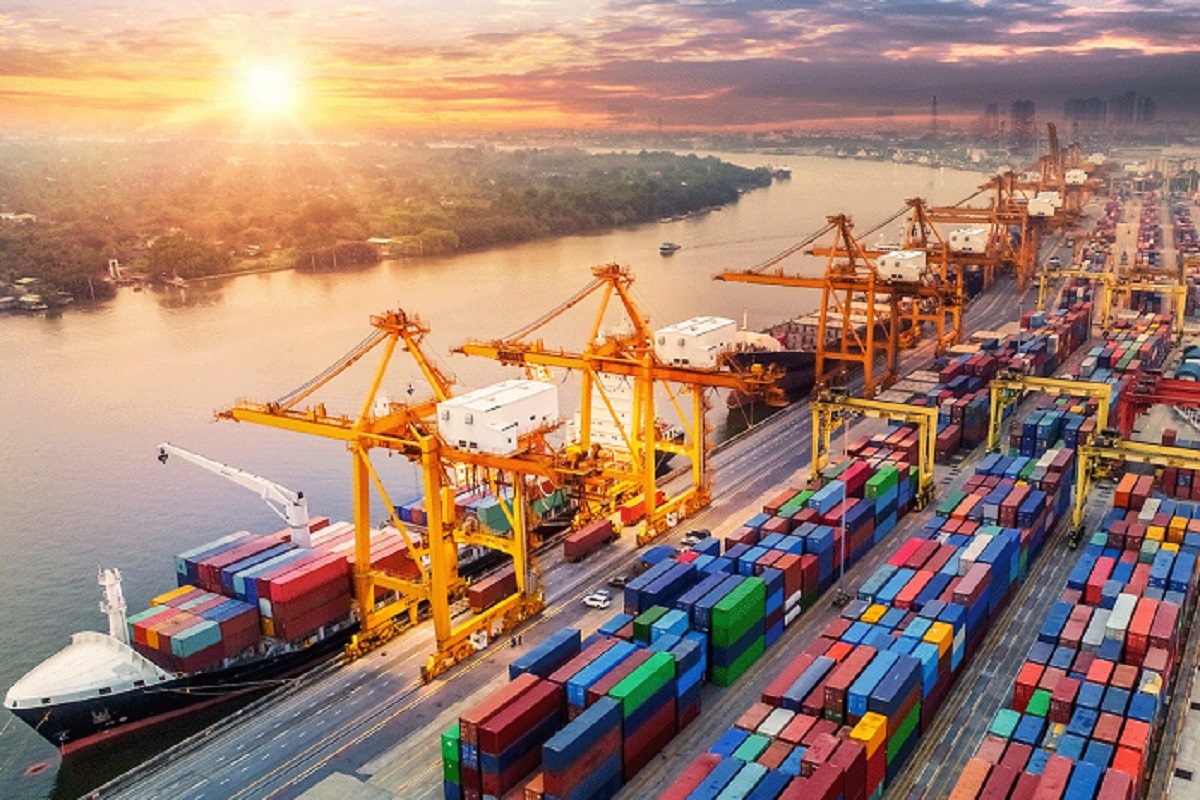
Adani's port
News has just come that Adani Ports and Special Economic Zone Ltd (APSEZ) has completed the acquisition of Karaikal Port Pvt Ltd (KPPL) pursuant to National Company Law Tribunal (NCLT) approval. This takes Adani’s total port tally in India to 14. The Group has already acquired a few major ports outside India, mainly Haifa port in Israel and a port in Sri Lanka.
Gateway ports played a critical role in China’s economic transformation, enabling the country to expand its GDP 25-fold between 1980 and 2021. In 1984, 14 coastal cities started opening to foreign direct investments, with gateway ports serving as the fulcrum for coastal economies. As a result, these cities enjoyed significant economic growth, says World Bank’s Report titled ‘Developing China’s Ports’. By 2021, China was home to seven of the world’s top ten busiest ports—Shanghai, Shenzhen, Ningbo-Zhoushan, Guangzhou, Qingdao, Tianjin, Dalian, and Xiamen. Along with other smaller ports on the coastline and inland ports, the Chinese port system was crucial to national economic growth and spreading the benefits of prosperity.
It is in this context that one should see the growth of Adani as a ports conglomerate. Adani Group’s bread and butter are ports. Over the last few years, the Group has made major investments in this sector.
Adani Group acquired the strategic Israeli port of Haifa for $1.2 billion and vowed to transform the skyline of this Mediterranean city as part of its decision to invest more in the Jewish nation, including opening an artificial intelligence lab in Tel Aviv. It is constructing a $700 million terminal project in Sri Lanka, which after completion will be the largest port in that country.
Within India, Adani is constructing India’s first Deepwater port in Vizhinjam, Kerala at Rs 7,525 crore. It will spend further Rs 850 crores over time to upgrade the infrastructure of Karaikal Port and make it a multipurpose port.
The Group aims to double the capacity of the port in the next five years and reduce the logistics cost for the Karaikal Port customers.
Adani has also proposed to invest Rs 19,000 crore to expand the Hazira port near Surat to six times its present size. AHPL intends to triple the cargo handling capacity, increasing the land utilization capacity from 228 hectares at present to 1,494 hectares and the cargo handling capacity from 84.1 million metric tonnes per annum (MMTPA) to 234 MMTP.
If one closely studies Chinese economic growth story one would find that decentralization of port management between 1978–91 laid the foundation of Chinese exponential growth in global world trade. Before China opened up its ports for private investments in 1978, international trade (merchandise imports and exports) accounted for only 14 percent of GDP. By 2019, merchandise trade in China had increased to 31 percent of GDP.
The Chinese port policy has four distinct phases. In the first phase from 1978-1991, China allowed cargo owners to build their own facilities and permitted some foreign companies to operate container terminals, under a tight regulatory framework. In the second phase –from 1992 through 2001—China allowed local governments to invest in port development. As a result “major ports started developing their own information systems to optimize efficiency. The growth center shifted northward along the coastline, and with reforms the old industrial centers such as Shanghai and surrounding areas saw a revival, “ says the World Bank Report. However, this was not enough. The port industry was not developing at the pace the central government believed was needed to keep up with global economic trends and ambitions for China’s role in global trade.
In the third phase—from 2002 to 2011—China further decentralized port governance and limited government intervention in operations and management by dividing port authorities into regulatory and commercial entities. This separation provided a stronger incentive for ports to improve their operational efficiency and competitiveness. It also encouraged joint-venture schemes, which previously had been limited, by providing legal protection and removing barriers to entry for domestic and foreign companies. China’s first dry port came into operation in 2002 with the aim of improving trade connectivity and lowering logistics costs. By 2008, locations for 28 dry ports had been selected; these dry ports were developed over the next decade and now total more than 70. The focus shifted from the expansion of capacity to the quality, efficiency, and sustainability of port services. Rail and inland waterways began to rival roads as options for connecting with an expanding domestic hinterland.
From 2011 onward China adopted major “green port” technologies and management measures, including evaluation criteria to guide and regulate environmental standards, new emission-control areas, incentives for developing shore power facilities (along with regulations to promote their use), and a switch from diesel-based terminal operations to electric-powered cranes and other terminal equipment.”
Adani Ports is already the largest commercial port operator in India accounting for nearly one-fourth of the cargo movement in the country. It is present across 14 domestic ports in seven maritime states of Gujarat, Maharashtra, Goa, Kerala, Andhra Pradesh, Tamil Nadu, and Odisha. Adani Ports are equipped with the latest cargo-handling infrastructure which is capable of handling the largest vessels calling at Indian shores. Adani ports handle diverse cargo, from dry cargo, liquid cargo, and crude to containers. Adani Mundra SEZ, spanning over 8000 hectares, is the largest multi-product SEZ in the country.
The phenomenal success of Adani ports is a reflection of the success of India’s economic liberalization policies. India now has 12 Major and 200+ Non-Major Ports situated along its 7500 km long coastline. Of the total cargo handled at Indian Ports, over 54% is handled at the country’s 12 Major Ports which include Adani’s Mundra Port and Govt-owned JNPT.
The country’s maritime sector plays a crucial role in its overall trade and growth, with 95% of the country’s trade volume and 65% of the trade value being undertaken through maritime transport.
But when compared with the Chinese port sector we are still light years behind.
Total containerized cargo volume for the whole of India’s major ports is about 8.5 million TEUs (twenty-foot equivalent unit), which is less than a quarter of volume handled by the largest container port in China, Shanghai (36.5 million TEUs). China has four ports which handle more than 20 million TEUs, Shanghai, Shenzhen, Ningbo & Zhoushan and Hong Kong China.
Even on the parameter of overall cargo, both with or without containerization, India has a fragmented capacity at different ports. We still don’t have a single major port with over 300 MTPA cargo handling capacity. Comparatively, in China, there are six cargo ports that can handle over 500 million tonnes of cargo per annum and it has another eight ports which handle cargo of more than 100 million tonnes up to 500 million tonnes. The port of Shanghai handled a cargo tonnage of 514 million tons in 2019, the Port of Ningbo-Zhoushan handled a cargo tonnage of 1.12 billion tons in the same year, the Port of Guangzhou handled over 600 million tons, the Port of Qingdao in Shandong Province handled over 600 million tons
With an aim to achieve ~5% share in world exports, India’s exports need to grow aggressively in the next 5 to 10 years and it is imperative for Indian Ports to strengthen maritime capabilities and improve Ease of Doing Business.
Maritime India’s Vision for 2030 envisions an overall investment of INR 3,00,000-3,50,000 Cr across ports, shipping, and inland waterways categories. This vision roadmap is estimated to help unlock INR 20,000+ Cr worth of potential annual revenue for Indian Ports. Further, it is expected to create an additional -20,00,000+ jobs (direct and non-direct) in the Indian maritime sector.
Adani Ports will have a major role to play in enabling India to achieve its MIV 2030. But the lesson to be drawn from the Chinese ports success is that India needs more private port operators like Adani.


















